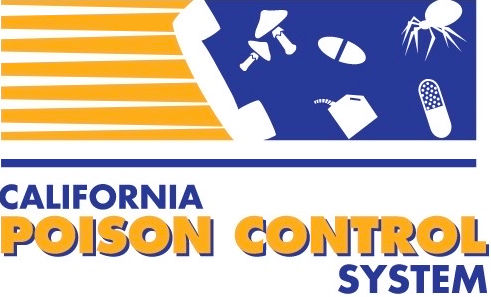Case presentation
A 39 year-old man was found slumped over at his home computer by his wife, who noted him to be diaphoretic and clammy with a weak pulse. She had last seen him normal 2 hours prior, at which point she had gone to bed. Unable to rouse him, she called 911. On arrival of paramedics, he was hypothermic to 36°C with a respiratory rate of 10. He was given an 0.4 mg of naloxone and had only a partial response within the next 5 minutes.
His presenting vital signs were as follows: blood pressure 104/73, pulse 77 beats per minute, respiratory rate 14 breaths per minute and oxygen saturation was 96% on room air. He was sedated initially but arousable to voice, and oriented with a nonfocal neurologic exam. Pupils were 3 mm and reactive. Naloxone 0.4 mg was again given with only a partial response.
Serum chemistry was normal except for Cr 1.43 mg/dL without a previous baseline. Liver function tests were normal. An electrocardiogram demonstrated normal sinus rhythm with normal intervals.
Over the next two hours, the patient gradually regained orientation and began to answer question. He related that due to his long-standing insomnia, he often takes 100-200 mg of diphenhydramine daily to sleep, as well as his usual 3 tablets of his prescription temazepam prescribed for the same reason. He also endorsed years of kratom use, and that night had taken 8-10 pills. He obtained kratom from the Internet and had only been using it to sleep. He denied any other drug use, including tobacco or alcohol.
Questions
- How can kratom be consumed?
- Is it legal?
- Are there any laboratory tests that could confirm the diagnosis?
- How should toxicity be managed?
Introduction
Kratom, the common name for Mitragyna speciosa, is a tropical plant found commonly in southeast Asia which has figured prominently in native customs. It was written about as early as the mid-1800s, where it was already described as a treatment for opium withdrawal in addition to its traditional use; in modern times, it has been transformed by the internet into an easily accessible “legal high,” and garners popularity as a cheaper alternative opioid.
It is consumed easily by simple chewing the fresh leaf or grinding the dried leaf, which can be eaten as is or placed into warm water to make a tea, often with salt to prevent constipation. Regular users use 10-30 leaves daily. Effects are quick-onset, with a feeling of being “happy, strong, and active.” Indeed, these results were desirable for encouraging manual labor. At higher doses, there is a more prominent euphoric and analgesic effect. Anorexia, weight loss and insomnia are common among long-term addicts. Abuse potential has been characterized by emerging reports both in animal models and humans. Withdrawal from kratom is similar opiate withdrawal with insomnia, gastroenteritis, myalgias, rhinorrhea, and lacrimation having been reported.
Epidemiology
Kratom’s use was first characterized in the latter half of the 20th century in a population of Thai farm laborers, who used it for its ability to promote manual labor. Although its use has been made illegal in Thailand and Malaysia, where it is still viewed in as a traditional custom rather than drug of abuse, it has been difficult to successfully enforce its regulation among native peoples. Kratom remains legal in Indonesia where it is a robustly traded cash crop.
Case reports of its use in western countries started to surface in the late 2000s, with initial calls to US poison centers occurring in 2008. It has been relatively easy to purchase in the US owing to its current status and is also widely distributed on the Internet where it has gained popularity as a “legal” high. Kratom is sold in a wide array of preparations varying from leaves for chewing and brewing to extracts for users to smoke. It has been marketed in packaging similar to other synthetic drugs, like spice, which is also contributing to its popularity. Overseas, it has become common to consume kratom in a cold cocktail called “4 x 100,” usually combined with a caffeine-containing soft drink, codeine, diphenhydramine or even DEET.
Pathophysiology
Kratom leaves contain over 25 alkaloids, but mitragynine and 7-hydroxymitragynine (7-HMG) are the primary active molecules. Mitragynine is overwhelmingly the most abundant molecule, making up 60-65% of the alkaloid content of the plant; with action at μ- and δ-opioid receptors, it is thought to be responsible for the bulk of analgesic activity and reduced gastrointestinal motility. It should be noted, however, that 7-HMG, although only compromising 2% of the alkaloid content, has been shown to have potency 30-46 times higher than mitragynine and 17 times higher than morphine. As far as the “coca-like” stimulant effects frequently described at lower doses, research has shown interaction at α2 and 5-HT2Areceptors, but conclusions have been conflicting and the mechanism remains poorly understood.
Diagnostics
Currently, mitragynine and related compounds can be identified using gas or liquid chromatography but these modalities that are not readily available in most hospital settings. Toxic and lethal mitragynine concentrations in humans are poorly delineated.
Treatment
No pure antidote exists. Treatment is supportive with the use of naloxone to antagonize any opioid effect causing significant depression of respirations or mental status. It should be noted that there have been several case reports of fatalities wherein mitragynine was eventually confirmed present. However, in none of these cases was mitragynine the only agent implicated. Nevertheless, the literature overall suggests that it can play a dangerous additive role in any concomitant ingestion of central nervous system depressants and should be approached with caution, as seen in the case presented above.
Discussion of questions
- How can kratom be consumed?
Traditionally, the leaf of the plant itself can been chewed or brewed into a tea. It has now been made into various forms sold over the internet, ranging from powder to pills to extracts that can be smoked. - Is it legal?
Yes in general but there is considerable variability from state to state. The DEA announced an intent to ban the active substances in kratom effective September 2016 but withdrew the proposal following criticism from the public, scientists, and members of congress. The DEA instead opened an official public comment period thus making the regulatory status of kratom highly unpredictable. - Are there any laboratory tests that could confirm exposure to kratom?
Yes, but currently none are readily available in clinical settings. - How should toxicity be managed?
Supportive care is the cornerstone of management with naloxone as needed for respiratory depression. Special attention should be paid to co-ingestants as consumption of kratom containing cocktails is not infrequent.



